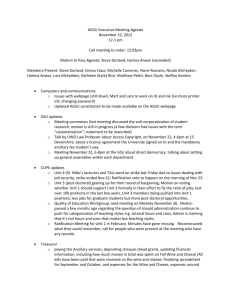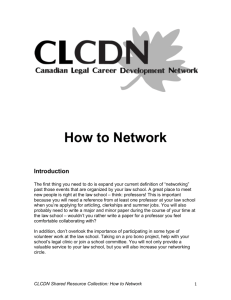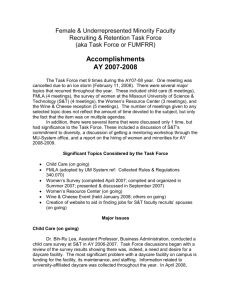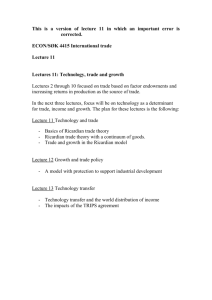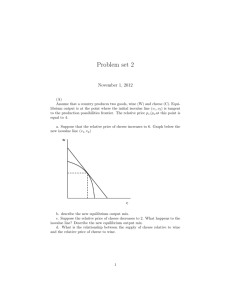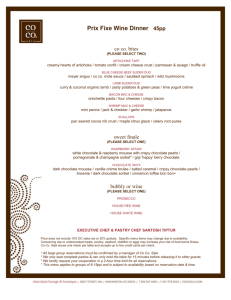Lecture 1: Comparative Advantage
advertisement
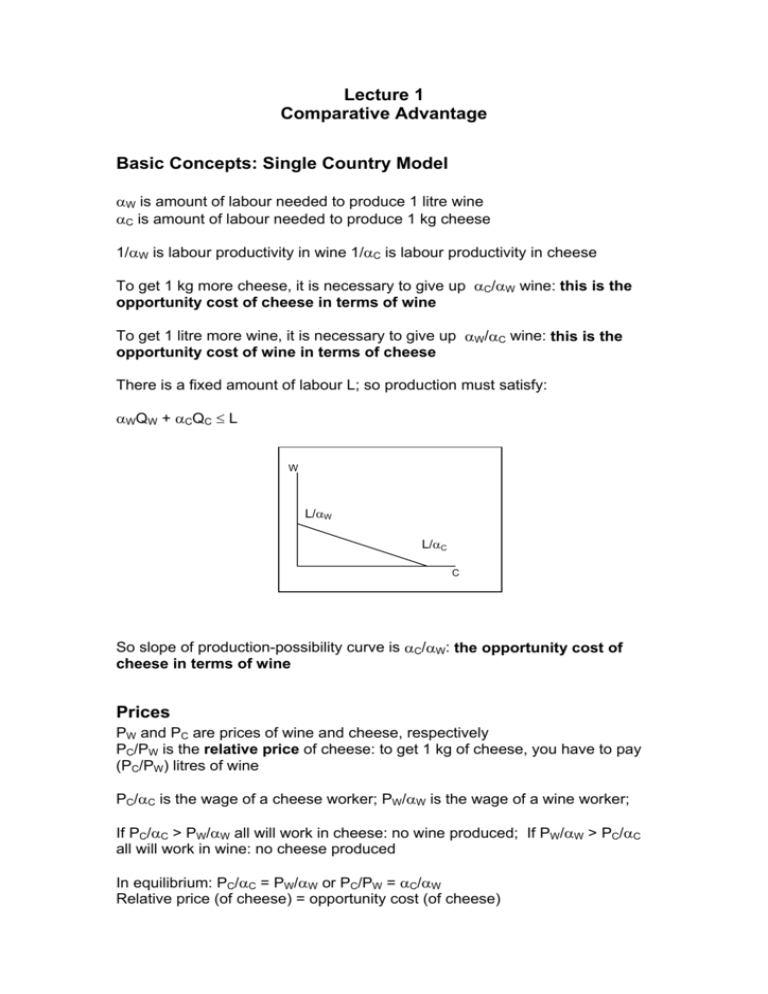
Lecture 1 Comparative Advantage Basic Concepts: Single Country Model αW is amount of labour needed to produce 1 litre wine αC is amount of labour needed to produce 1 kg cheese 1/αW is labour productivity in wine 1/αC is labour productivity in cheese To get 1 kg more cheese, it is necessary to give up αC/αW wine: this is the opportunity cost of cheese in terms of wine To get 1 litre more wine, it is necessary to give up αW/αC wine: this is the opportunity cost of wine in terms of cheese There is a fixed amount of labour L; so production must satisfy: αWQW + αCQC ≤ L W L/αW L/αC C So slope of production-possibility curve is αC/αW: the opportunity cost of cheese in terms of wine Prices PW and PC are prices of wine and cheese, respectively PC/PW is the relative price of cheese: to get 1 kg of cheese, you have to pay (PC/PW) litres of wine PC/αC is the wage of a cheese worker; PW/αW is the wage of a wine worker; If PC/αC > PW/αW all will work in cheese: no wine produced; If PW/αW > PC/αC all will work in wine: no cheese produced In equilibrium: PC/αC = PW/αW or PC/PW = αC/αW Relative price (of cheese) = opportunity cost (of cheese) Two-Country Model αW is amount of labour needed to produce 1 litre wine at Home (H) α*W is amount of labour needed to produce 1 litre wine in Foreign (F) αC is amount of labour needed to produce 1 kg cheese in H α*C is amount of labour needed to produce 1 kg cheese in F 1/αW is labour productivity in wine 1/αC is labour productivity in cheese in H 1/α*W is labour productivity in wine 1/α*C is labour productivity in cheese in F If 1/αW > 1/α*W (equivalently, αW < α*W): H has an absolute advantage in wine over F If 1/αC > 1/α*C (equivalently, αC < α*C): H has an absolute advantage in cheese over F α C αW then relative productivity in F is higher in wine than in cheese or < α C* αW* equivalently, relative productivity in H is higher in cheese than in wine If H has a comparative advantage in cheese and F has a comparative advantage in wine A country may have absolute advantage in both commodities but it can only have comparative advantage in one commodity L/α*W L/α*C αC α* and *C αW αW They are determined entirely by domestic labour requirements (domestic productivity) Before trade the relative prices in the two countries are: After trade there is a common relative price: PˆC PˆW Question is: What will production of wine and cheese be in H and F, after trade? PC/PW A 3 α*C/α*W D3 1 αC/αW D1 2 B X If D2 L / αC QC + QC* L* / αW* QW + QW* PˆC α C no cheese will be produced: H and F will both specialise in wine < PˆW α C α C* PˆC α C If * < , H will specialise in the production of cheese and F will < αW PˆW αW specialise in the production of wine H will produce L/αC kg of cheese and F will produce L*/α*C litres of wine (see point X) So trade will lead to specialisation if post-trade demand (D1) is such that post-trade relative price is the segment AB. But if post-trade demand is D2, H will produce both cheese and wine, but F will specialise. But if post-trade demand is D3, F will produce both cheese and wine, but H will specialise. Gains From Trade GfT arise essentially because trade gives a country an additional source of supply. H can either produce wine or it can use some of its cheese (exports) to buy wine from F (imports). If it uses 1 man-hour to produce wine it gets 1/αW litres of wine. Alternatively, it could use 1 man-hour to produce 1/αC kg of cheese and use this cheese to Pˆ α 1 PˆC 1 PˆC 1 buy litres of wine from F. If or C > C , the second > α C PˆW αW α C PˆW PˆW αW α Pˆ course is more attractive. So W C is the percentage gains from trade. α C Pˆ W Key Concepts: David Ricardo: Ricardian Model of Comparative Advantage Unit labour requirement Labour productivity Absolute advantage Comparative advantage Specialisation Gains from Trade
